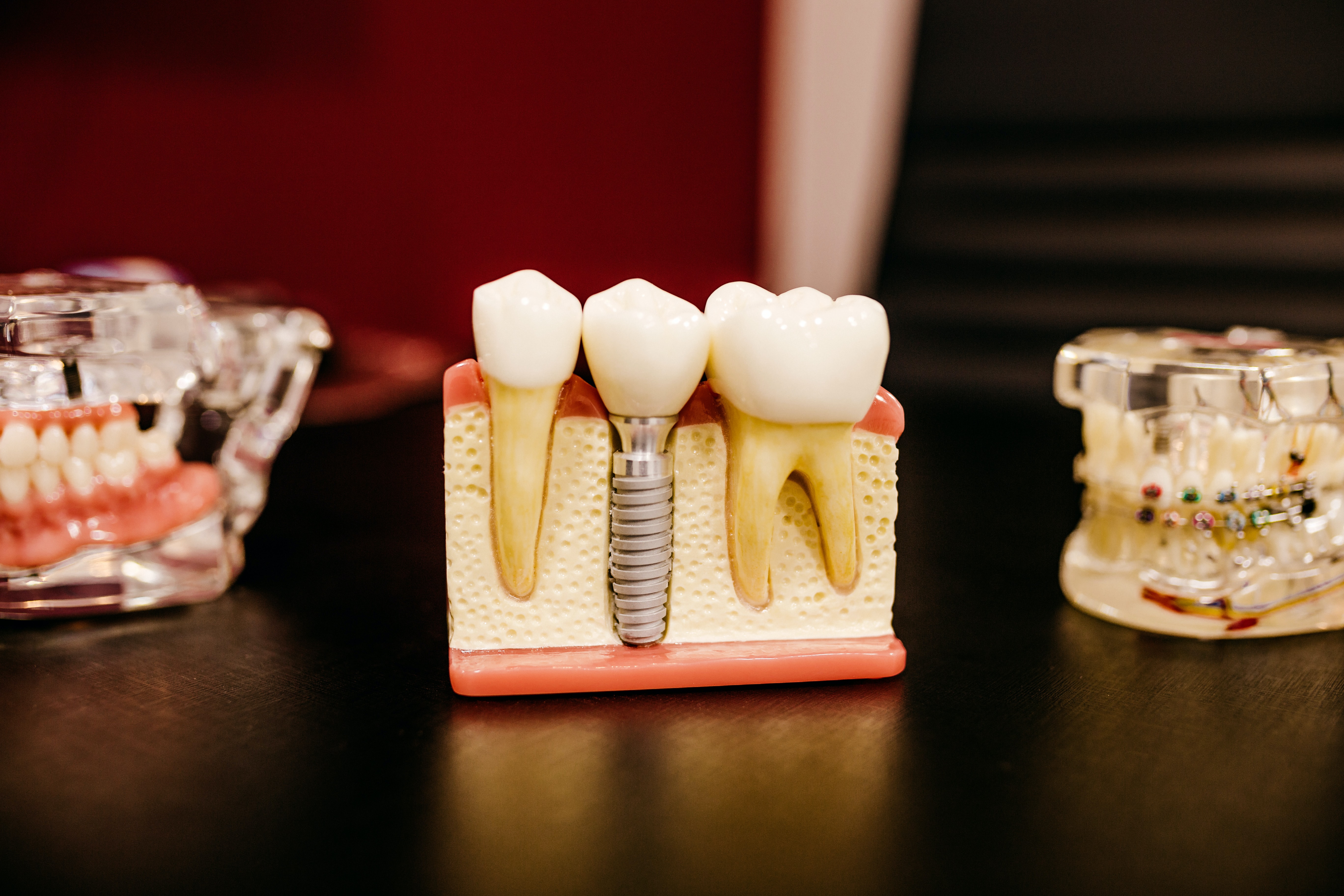After a tooth is extracted, there is a hole left in the gum and the bone that needs to heal. At the time of the extraction any infected material or remnant of the tooth must be removed. In the past, this socket was left to heal on its own by first forming a blood clot followed by migration of bone and gum tissue into the area. However, bone grows slowly so it was a common experience for the socket to collapse as it was healing. This left a shrunken area in the bone. With several extractions, the bone density of the upper and lower jaw could become very receded and fragile often limiting what could be done to reconstruct the bite or even fabricate a comfortable denture.
To prevent this condition from developing, we now fill the site of an extraction with a bone grafting material that allows the bone to keep its shape and strength while healing. As the new bone is growing into the extraction site, the graft material is replaced by new bone cells and this healed site can now be used for placing an implant to replace the previously broken-down tooth.
The area of oral surgery includes extractions and grafting, implant placement, biopsies, frenectomies, and emergency care. Gum surgery is used to treat and repair the gum and bone around the root of a tooth to eliminate pockets, restore receded gums, and stabilize compromised jaw tissue. Grafting of gum tissue is one method to treat receded areas and bone grafting is a method to stabilize compromised teeth. Gum surgery is used, when necessary, in combination with deep cleaning, laser therapy, and other non- surgical techniques to ensure and maintain healthy gum tissue. This will limit the loss of teeth and prevent infection in gum tissue.
Our team is highly skilled in the diagnosis and treatment of gum tissue with both non-surgical and surgical treatments.

